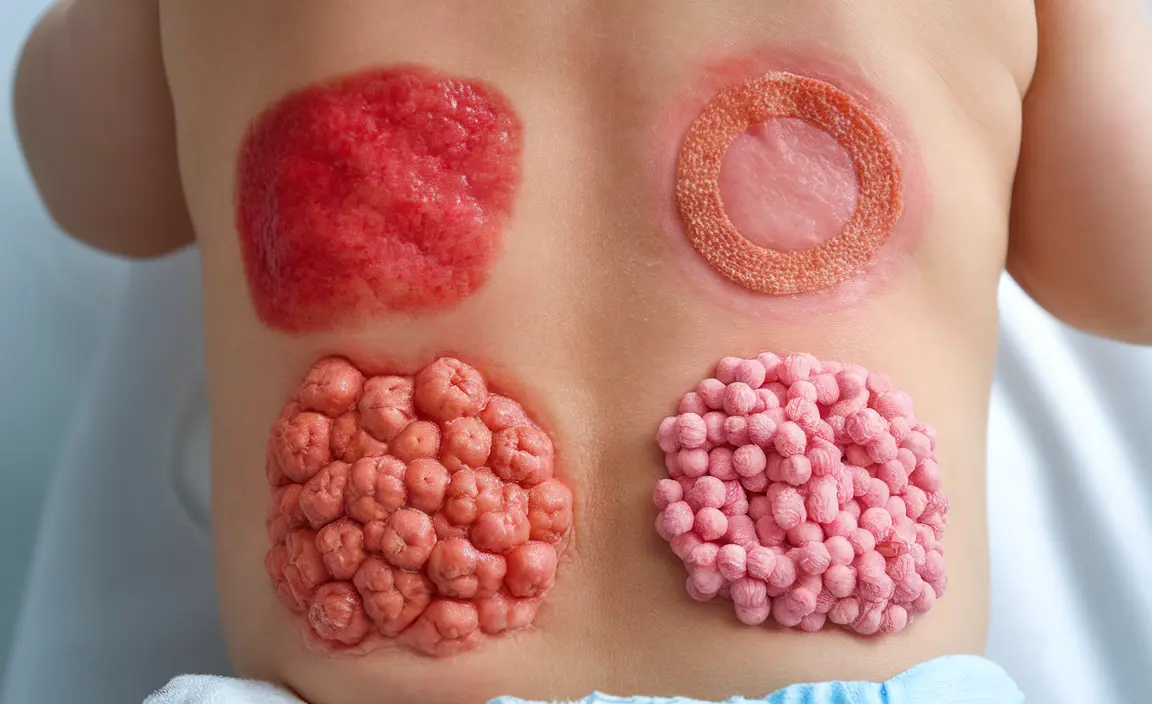Identifying and treating diaper rash effectively requires understanding the distinct types that can affect your baby's delicate skin. Each variety of diaper rash presents with unique characteristics and requires specific treatment approaches. This comprehensive guide will help you recognize, treat, and prevent various forms of diaper rash to keep your little one comfortable.
Common Types of Diaper Rash and Their Appearance
Being able to identify different types of diaper rash is crucial for proper treatment. Here's what to look for with each variety:
Irritant Dermatitis
The most common type of diaper rash appears as bright red, slightly raised patches on areas that come into direct contact with the diaper. The skin may look tender and feel warm to the touch, with the rash primarily affecting the buttocks, thighs, and lower abdomen.
Yeast (Candida) Rash
Yeast-based diaper rashes typically present as bright red, slightly raised patches with distinct borders. You might notice smaller red dots (satellite lesions) scattered around the main rash area. These rashes often develop in the deep folds of the skin and can be particularly persistent.
Allergic Reaction Rash
Allergic diaper rashes appear as red, irritated areas that may extend beyond the diaper area. The skin might look bumpy or develop small blisters, and the rash can appear suddenly after exposure to new products or materials.
Bacterial Infection
Bacterial diaper rashes often look bright red with yellow crusting or pus-filled blisters. The affected area may feel warm to the touch and could be accompanied by fever in more severe cases.
Understanding the Root Causes
Different types of diaper rash develop for various reasons:
- Prolonged exposure to moisture
- Friction from diapers rubbing against skin
- Chemical irritants in certain products
- Antibiotic use (leading to yeast overgrowth)
- Changes in diet or stool frequency
- Sensitive skin reactions to products
Treatment Approaches for Different Rash Types
General Care Guidelines
Basic treatment steps include:
- Frequent diaper changes
- Gentle cleaning with warm water
- Allowing skin to air dry
- Using appropriate barrier creams
Specific Treatments by Type
Each type of diaper rash requires targeted treatment:
- Irritant rash: Zinc oxide-based creams
- Yeast infections: Antifungal creams (with doctor approval)
- Allergic reactions: Removing irritants and using hypoallergenic products
- Bacterial infections: Prescribed antibiotic ointments when necessary
Prevention Strategies
Implement these preventive measures to minimize diaper rash occurrence:
- Change diapers promptly when wet or soiled
- Clean the area thoroughly but gently
- Allow skin to dry completely before putting on a new diaper
- Use fragrance-free, hypoallergenic products
- Ensure proper diaper fit to prevent chafing
When to Seek Medical Care
Contact your healthcare provider if you notice:
- Rash persisting beyond 3-4 days despite home treatment
- Signs of infection (fever, pus, severe redness)
- Blisters or open sores
- Rash spreading beyond the diaper area
- Signs of significant discomfort or pain
Frequently Asked Questions
What do different types of diaper rash look like in pictures and how can I identify them? Irritant rash appears as red, inflamed skin in the diaper area. Yeast rashes show bright red patches with satellite spots. Allergic rashes may have bumps or blisters, while bacterial infections often have yellow crusting or pus.
What are the main causes of irritant, yeast, allergic, and bacterial diaper rashes? Irritant rashes result from prolonged moisture exposure. Yeast rashes often follow antibiotic use or warm, moist conditions. Allergic rashes stem from sensitivity to products, while bacterial infections can develop from skin breakdown or contamination.
How can I treat each type of diaper rash effectively at home? Use zinc oxide creams for irritant rashes, antifungal treatments for yeast infections (with medical guidance), hypoallergenic products for allergic reactions, and keep the area clean and dry for all types. Bacterial infections may require prescription treatment.
What are the best ways to prevent diaper rash and keep my baby's skin healthy? Change diapers frequently, clean gently but thoroughly, allow skin to dry completely, use barrier creams preventively, and choose appropriate diaper sizes and hypoallergenic products.
When should I seek medical help for a diaper rash that looks severe or does not improve? Seek medical attention if the rash persists beyond 3-4 days of home treatment, shows signs of infection, develops blisters or open sores, spreads beyond the diaper area, or causes significant distress to your baby.




